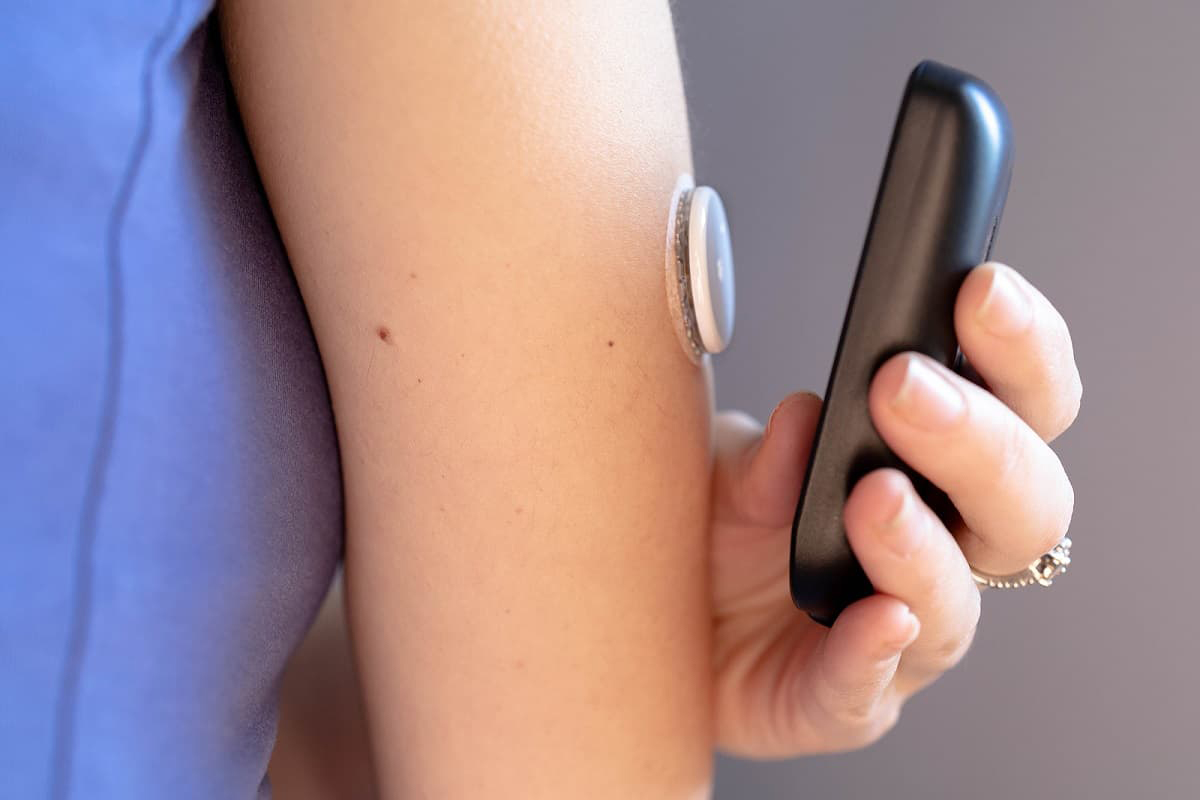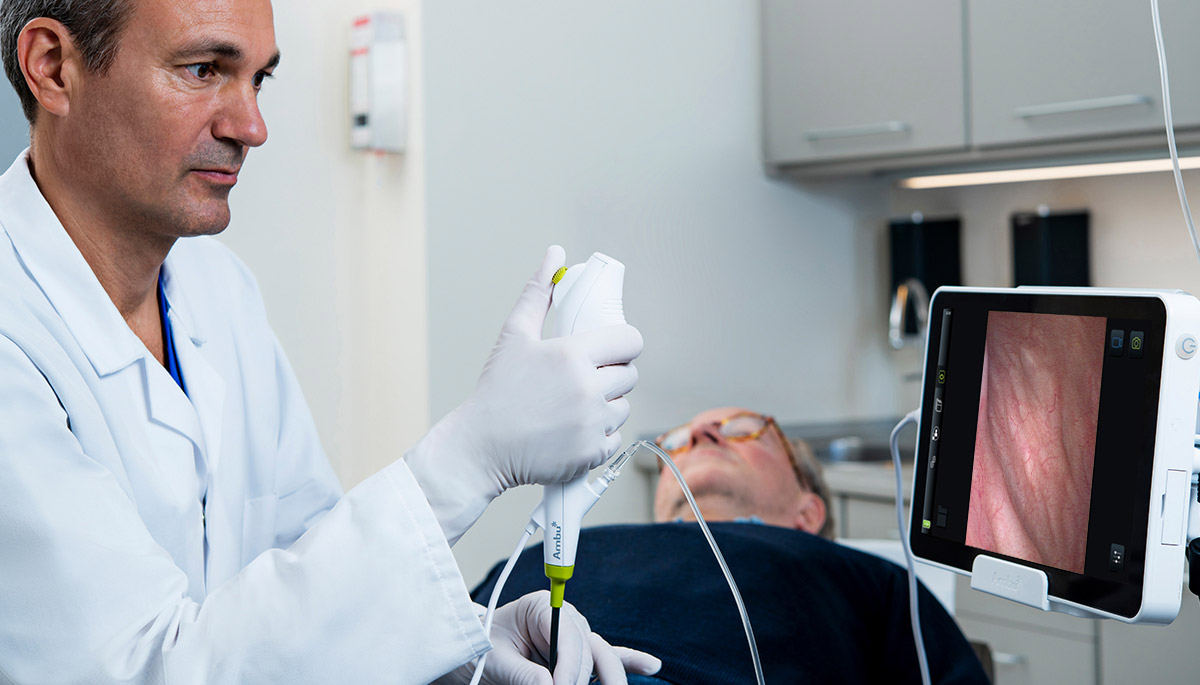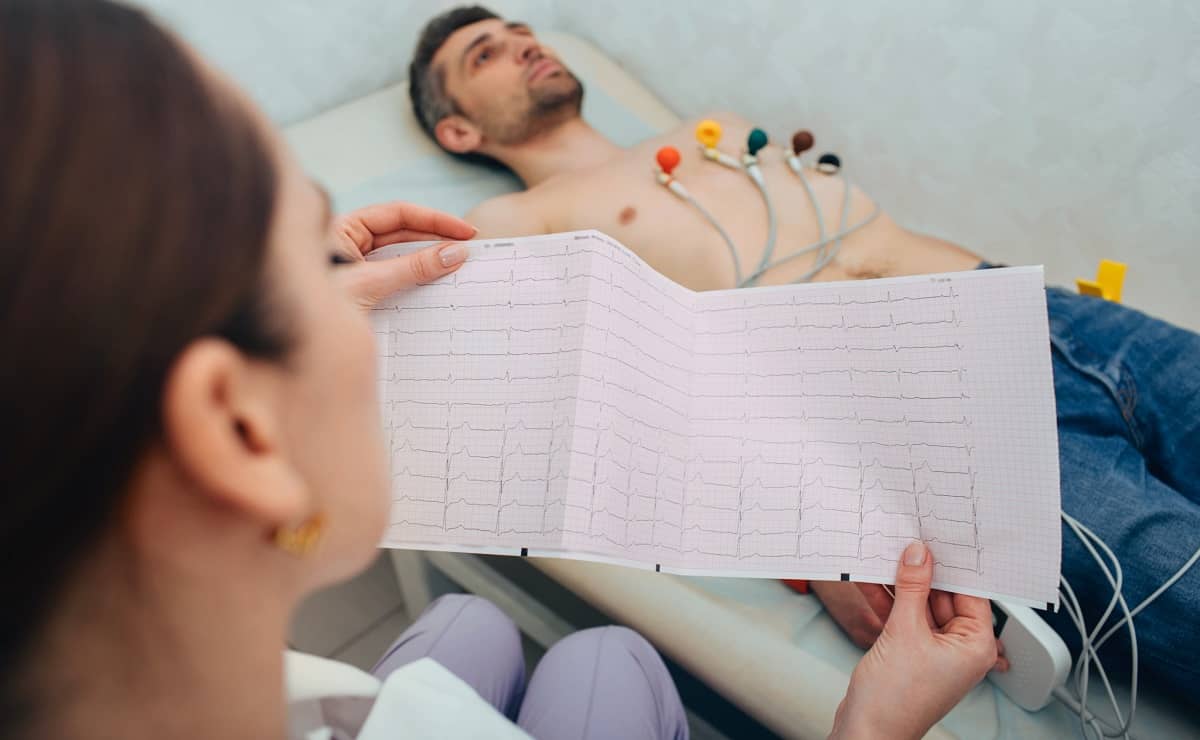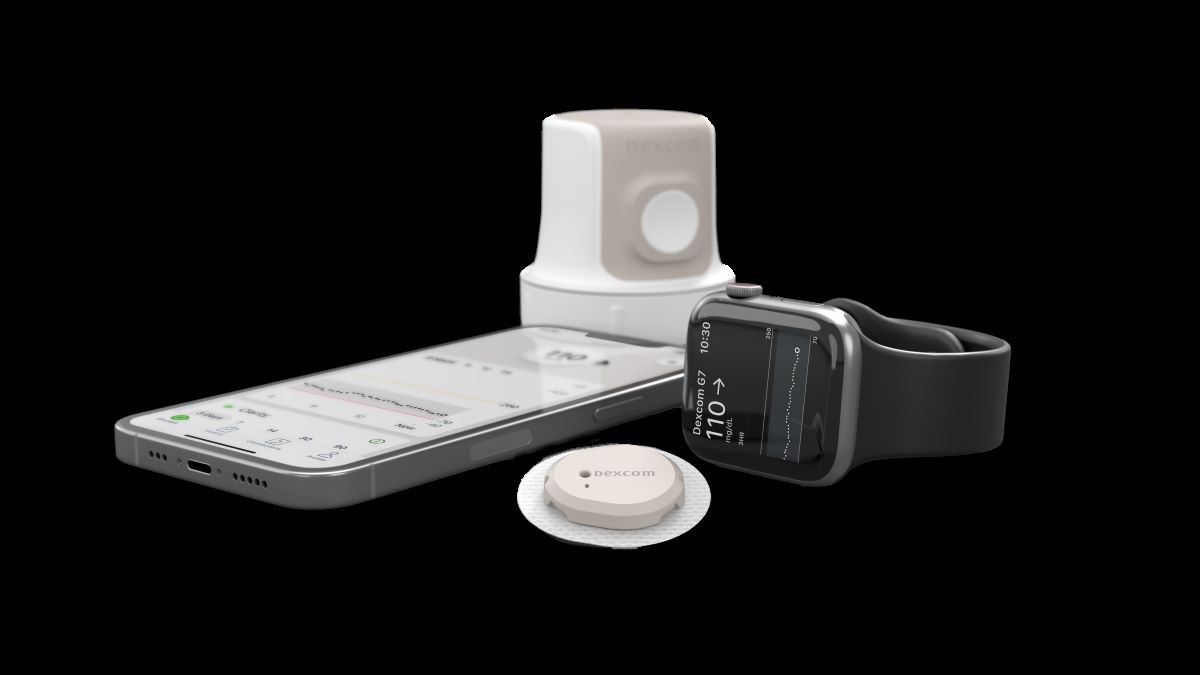

Finance
How Much Does Dexcom Cost Without Insurance
Published: November 22, 2023
Find out the cost of Dexcom without insurance and explore financing options. Take control of your financial health and manage your diabetes care with ease.
(Many of the links in this article redirect to a specific reviewed product. Your purchase of these products through affiliate links helps to generate commission for LiveWell, at no extra cost. Learn more)
Table of Contents
Introduction
Managing diabetes is a constant challenge that requires careful monitoring of blood glucose levels. Dexcom, a leader in continuous glucose monitoring (CGM) systems, has revolutionized the way individuals with diabetes can track their glucose levels in real-time.
But what happens if you don’t have insurance coverage? You may be wondering about the cost of Dexcom without insurance. In this article, we’ll explore the pricing options for Dexcom and shed some light on the expenses associated with this life-changing technology.
Before delving into the costs, let’s first understand what Dexcom is and how it works.
Dexcom is a CGM system that consists of a small sensor placed under the skin to measure glucose levels in the interstitial fluid. It continuously sends these readings to a receiver or mobile device, allowing users to monitor their glucose levels and make informed decisions about their treatment regimen.
Now, let’s dive into the different components of Dexcom and their associated costs without insurance coverage.
Understanding Dexcom
Before we discuss the cost of Dexcom without insurance, it’s important to understand the different components that make up the Dexcom CGM system.
The Dexcom G6 system consists of three main components:
- The sensor: This small device is inserted just beneath the skin and measures glucose levels in the interstitial fluid. It continuously collects data and sends it to the receiver or mobile device.
- The transmitter: The transmitter is attached to the sensor and wirelessly sends the glucose data to the receiver or mobile device. It acts as a communicator between the sensor and the user’s device.
- The receiver: The receiver displays the glucose readings in real-time and provides alerts and notifications for high and low glucose levels. It can be a standalone device or a compatible smartphone or smartwatch.
With Dexcom, users can have access to their glucose data anytime, anywhere. The system provides accurate and reliable readings, reducing the need for frequent fingerstick tests.
In addition to these main components, Dexcom also offers other accessories such as adhesives and transmitters replacements.
Now that we have an understanding of the Dexcom system, let’s explore the pricing options for Dexcom and the costs associated with each component.
Dexcom Pricing Options
When considering the cost of Dexcom without insurance, it’s important to note that Dexcom offers different pricing options to meet the diverse needs of its users. Let’s take a closer look at these options:
- Retail pricing: Dexcom offers a retail pricing option for those who do not have insurance coverage or prefer to purchase Dexcom directly. The retail price may vary depending on the specific component of Dexcom that you need.
- Insurance coverage: If you have insurance, it’s essential to check whether your insurance plan covers Dexcom CGM systems. Many insurance plans cover at least a portion of the Dexcom cost, reducing your out-of-pocket expenses. It’s advisable to consult with your insurance provider to determine your coverage and understand any potential copayments or deductibles.
- Pharmacy benefits: Some pharmacies may offer Dexcom products through their pharmacy benefits program. This can provide additional savings and discounts for those without insurance coverage.
- Patient assistance programs: Dexcom understands the financial burden that can come with managing diabetes. They offer patient assistance programs for individuals who qualify based on financial need. These programs aim to make Dexcom more accessible and affordable for those who would otherwise struggle to afford it.
It’s important to explore all available options and determine which pricing option best suits your needs and financial situation.
Now that we have a better understanding of the pricing options, let’s delve into the costs associated with the specific components of the Dexcom system.
Dexcom G6 System Cost
The Dexcom G6 system is a comprehensive continuous glucose monitoring solution that offers accurate and reliable glucose readings. When considering the cost of Dexcom without insurance, it’s important to evaluate the expenses associated with the Dexcom G6 system.
The Dexcom G6 system comes with the following components:
- The Dexcom G6 sensor
- The Dexcom G6 transmitter
- The Dexcom G6 receiver or compatible mobile device
Individually, these components have their own costs. The Dexcom G6 sensor is typically replaced every 10 days, while the Dexcom G6 transmitter is replaced every 3 months. The Dexcom G6 receiver or compatible mobile device serves as the interface for displaying glucose readings.
When pricing the Dexcom G6 system without insurance, it’s important to consider the combined cost of these components. While the cost may vary depending on various factors, including location and any ongoing promotions or discounts, the average cost of the Dexcom G6 system can range from $500 to $800.
It’s essential to note that this estimate is for the initial purchase of the Dexcom G6 system. Ongoing costs, such as sensor and transmitter replacements, will need to be factored in to ensure continuous glucose monitoring.
Next, let’s explore the costs of individual components of the Dexcom G6 system, such as the Dexcom G6 transmitter and sensor.
Dexcom G6 Transmitter Cost
The Dexcom G6 transmitter is a crucial component of the Dexcom G6 system, as it wirelessly sends glucose data from the sensor to the receiver or compatible mobile device. When considering the cost of Dexcom without insurance, it’s important to factor in the expenses associated with the Dexcom G6 transmitter.
The Dexcom G6 transmitter is typically replaced every three months. The cost of a single Dexcom G6 transmitter without insurance coverage can range from $200 to $300.
It’s important to note that the Dexcom G6 transmitter is not reusable, so ongoing replacements are necessary to continue utilizing the Dexcom CGM system. These costs should be factored into your budget for proper diabetes management.
However, it’s worth mentioning that some insurance plans may cover a portion of the transmitter cost, reducing your out-of-pocket expenses. If you have insurance coverage, it’s advisable to consult with your insurance provider to understand the details of your coverage and potential cost-sharing.
Additionally, if you are facing financial constraints, it may be worthwhile to explore Dexcom’s patient assistance programs, which can help alleviate the financial burden for those who qualify based on financial need.
Next, let’s discuss the costs associated with the Dexcom G6 sensor, another vital component of the Dexcom CGM system.
Dexcom G6 Sensor Cost
The Dexcom G6 sensor is a crucial component of the Dexcom G6 system, as it continuously measures glucose levels in the interstitial fluid and sends the data to the receiver or compatible mobile device. When considering the cost of Dexcom without insurance, it’s important to understand the expenses associated with the Dexcom G6 sensor.
The Dexcom G6 sensor is typically replaced every 10 days, ensuring continuous glucose monitoring. The cost of a single Dexcom G6 sensor without insurance coverage can range from $50 to $100.
It’s important to note that multiple sensors are required to maintain continuous glucose monitoring, as each sensor lasts for a limited duration. Depending on your usage and the recommended frequency of sensor replacements, the costs of Dexcom G6 sensors can add up over time.
However, it’s worth mentioning that some insurance plans may cover a portion of the sensor cost, reducing your out-of-pocket expenses. If you have insurance coverage, it’s advisable to consult with your insurance provider to understand the details of your coverage and potential cost-sharing.
Dexcom also offers various programs and initiatives to assist individuals who face financial constraints. Their patient assistance programs aim to make Dexcom more accessible and affordable to those who qualify based on financial need.
Furthermore, it’s important to consider the long-term benefits of continuous glucose monitoring with the Dexcom G6 system. By providing accurate and real-time glucose readings, the Dexcom G6 system can help individuals with diabetes make informed decisions about their treatment regimen, resulting in improved diabetes management and potentially reducing the risk of long-term complications.
Next, let’s explore the costs associated with the Dexcom G6 receiver or compatible mobile device.
Dexcom G6 Receiver Cost
The Dexcom G6 receiver is a device that displays glucose readings in real-time and provides alerts and notifications for high and low glucose levels. For those considering the cost of Dexcom without insurance, it’s essential to factor in the expenses associated with the Dexcom G6 receiver.
The Dexcom G6 receiver serves as the interface for monitoring glucose levels. It can be purchased separately or as part of the Dexcom G6 system kit. The cost of a Dexcom G6 receiver without insurance coverage can range from $200 to $300.
If you prefer a more streamlined and convenient option, Dexcom also offers compatibility with select smartphones and smartwatches. This allows you to use your own mobile device as the receiver, reducing the need for an additional device purchase.
It’s important to note that if you already have a compatible mobile device, such as an iPhone or Android smartphone, you may be able to download the Dexcom G6 app and use your phone as the receiver at no extra cost.
However, if you prefer a dedicated Dexcom G6 receiver or if your mobile device is not compatible, you can explore the option of purchasing a Dexcom G6 receiver separately.
Remember that Dexcom G6 receivers are not reusable, and if you require a replacement or an additional receiver, you will need to factor in the associated costs.
It’s worth mentioning that some insurance plans may cover a portion of the receiver cost, reducing your out-of-pocket expenses. If you have insurance coverage, it’s advisable to consult with your insurance provider to understand the details of your coverage and potential cost-sharing.
Next, let’s explore any other potential costs associated with using Dexcom in addition to the main components mentioned.
Other Dexcom Costs
In addition to the main components of the Dexcom G6 system, there may be other costs to consider when calculating the overall expense of Dexcom without insurance. These additional costs can vary depending on individual needs and preferences. Here are some potential expenses to keep in mind:
- Adhesives: Dexcom sensors require adhesives to securely attach to the skin. Over time, you may need to purchase additional adhesives to ensure proper sensor placement.
- Transmitter replacements: While the Dexcom G6 transmitter is expected to last for three months, there might be instances where you need to replace it sooner due to damage or malfunction.
- Data management software: Dexcom offers software and mobile apps for data analysis and management. While some basic functions may be free, there may be additional features or premium versions that come with a cost.
- Accessories: Dexcom offers a range of accessories, such as cases, covers, and protective gear, to enhance the usability and longevity of the system. These accessories are optional but may be desirable to some users.
It’s important to consider these potential additional costs when budgeting for Dexcom without insurance. While they may not be significant, they can contribute to the overall expenditure associated with using Dexcom for continuous glucose monitoring.
Now that we have explored the various costs associated with Dexcom without insurance coverage, let’s take a look at the factors that can influence the cost of Dexcom for individuals.
Factors Affecting Dexcom Cost without Insurance
Several factors can influence the cost of Dexcom without insurance coverage. Understanding these factors can help individuals estimate and plan for the expenses associated with using Dexcom for continuous glucose monitoring. Here are some key factors to consider:
- Location: The cost of medical devices, including Dexcom, can vary depending on your geographical location. Prices may differ between regions or even healthcare providers within the same area.
- Supplier: Different suppliers may offer Dexcom products at varying prices. It’s worth exploring different suppliers or authorized distributors to compare costs and find the most affordable option for your needs.
- Promotions and discounts: Dexcom occasionally offers promotions, discounts, or rebate programs that can help reduce the overall cost of their products. It’s always worth keeping an eye out for any ongoing deals or special offers that may be available.
- Patient assistance programs: As previously mentioned, Dexcom offers patient assistance programs for individuals who qualify based on financial need. These programs can provide significant financial relief by reducing or eliminating the cost of Dexcom products.
- Usage and replacements: The frequency of sensor and transmitter replacements can impact the overall cost of using Dexcom. Depending on your usage and the recommended replacement schedule, you may need to budget for more frequent purchases.
- Additional accessories: Optional accessories, such as adhesives, protective gear, or data management software, can add to the overall cost of using Dexcom. Consider whether these accessories are necessary for your individual needs and factor their costs into your budget.
By taking these factors into account, individuals can estimate and plan for the cost of Dexcom without insurance. It’s important to conduct thorough research, explore different pricing options, and leverage any available resources or assistance programs to make Dexcom more affordable.
In the next section, let’s explore potential financing options for Dexcom to help individuals manage the cost of this valuable continuous glucose monitoring system.
Financing Options for Dexcom
For individuals seeking financing options to manage the cost of Dexcom without insurance coverage, there are several avenues to consider. These options can help make Dexcom more affordable and accessible. Here are some potential financing options:
- Flexible Spending Account (FSA) or Health Savings Account (HSA): If you have access to an FSA or HSA through your employer or as an individual, you can use these pre-tax accounts to pay for eligible medical expenses, including Dexcom products. By allocating funds to your FSA or HSA, you can cover the cost of Dexcom without using your post-tax income.
- Payment plans: Some suppliers or authorized distributors may offer payment plans or financing options that allow you to spread out the cost of Dexcom over a specified period. This can make it more manageable to budget for the expenses associated with continuous glucose monitoring.
- Healthcare financing programs: There are third-party financing programs available specifically for medical expenses. These programs enable you to make monthly payments towards the cost of Dexcom over a set period, often with low or no interest rates. It’s important to carefully review the terms and conditions of these programs, including any potential fees or penalties.
- Charitable foundations and assistance programs: Certain charitable foundations or assistance programs may provide financial aid or grants to individuals who require assistance with medical expenses. These programs may have specific eligibility criteria and application processes, so it’s important to research and reach out to relevant organizations for potential financial support.
- Manufacturer discounts and rebates: Dexcom and other medical device manufacturers may offer discounts or rebate programs directly to patients. These programs can help reduce the overall cost of Dexcom products and make them more affordable.
It’s important to explore these financing options and determine which ones align with your financial situation and needs. Consider reaching out to Dexcom directly, speaking with suppliers or authorized distributors, or consulting with financial advisors to explore the most suitable financing options for you.
Now that we’ve discussed the financing options for Dexcom, let’s summarize the key points and conclude our article.
Conclusion
Managing diabetes can be challenging, but with continuous glucose monitoring systems like Dexcom, individuals can gain valuable insights into their glucose levels and make informed decisions about their treatment regimen. However, understanding the cost of Dexcom without insurance is crucial for individuals who may not have coverage or need to plan for out-of-pocket expenses.
In this article, we explored the different components of the Dexcom G6 system and their associated costs. We discussed the pricing options available, including retail pricing, insurance coverage, pharmacy benefits, and patient assistance programs. These options provide individuals with various avenues to obtain Dexcom products at affordable prices.
We also highlighted key factors that can influence the cost of Dexcom without insurance, such as location, supplier, promotions, and usage. Understanding these factors can help individuals estimate and plan for the expenses associated with using Dexcom for continuous glucose monitoring.
Furthermore, we discussed potential financing options, including FSAs and HSAs, payment plans, healthcare financing, and charitable foundations. Exploring these options can help make Dexcom more accessible and manageable in terms of cost.
It’s important to remember that Dexcom offers valuable benefits in terms of accurate and real-time glucose readings, which can lead to improved diabetes management and potentially reduce the risk of long-term complications. By considering pricing options, financial assistance programs, and financing avenues, individuals can make informed decisions about obtaining Dexcom products that align with their needs and budget.
In conclusion, while the cost of Dexcom without insurance may be a consideration, it shouldn’t deter individuals from experiencing the benefits of continuous glucose monitoring. By exploring available options and leveraging resources, individuals can access Dexcom and empower themselves to live a healthier and more informed life with diabetes.














